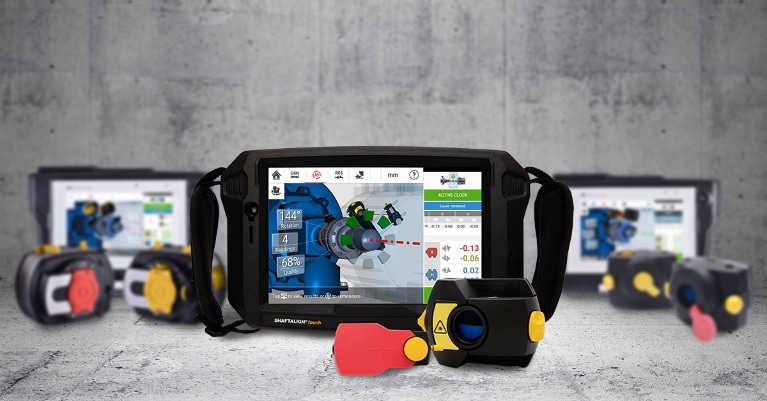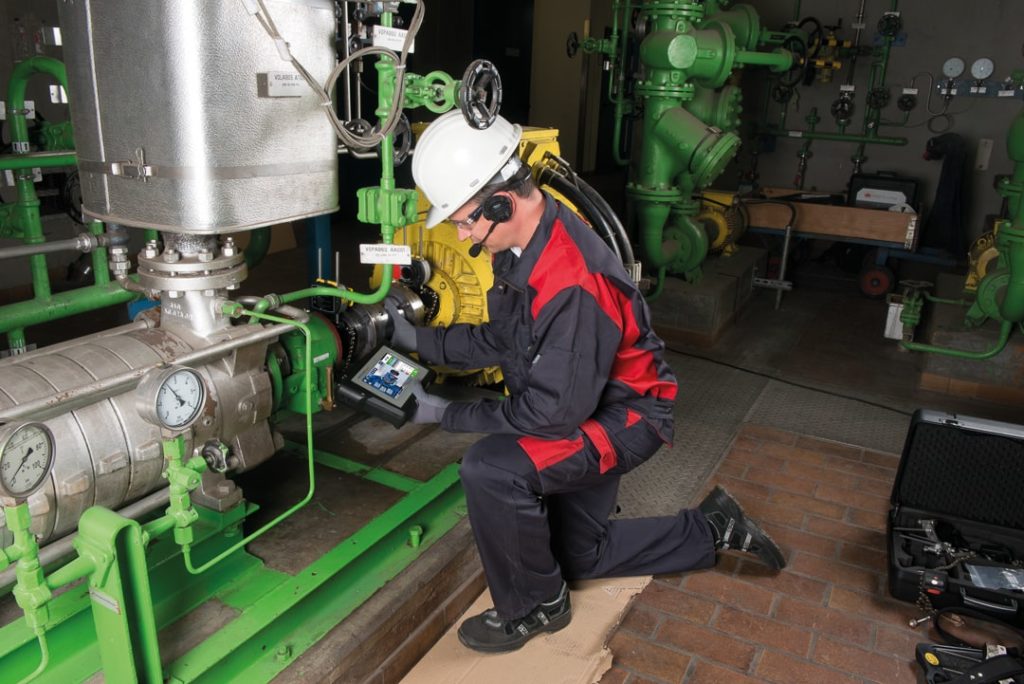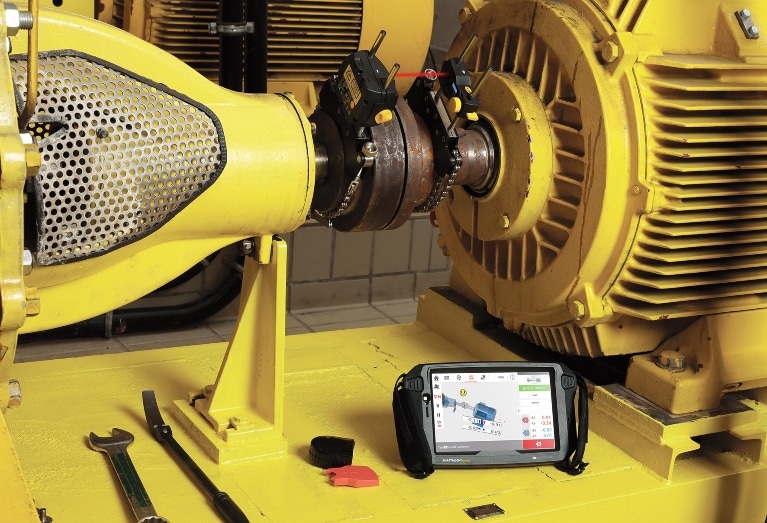A technologically advanced laser shaft alignment tool enables maintenance teams to complete a shaft alignment quicker and with higher precision. When choosing a laser shaft alignment tool, it’s good to understand the drawbacks of less robust laser alignment systems, such as dual-laser systems.
Shaft misalignment causes increases in machine vibration, bearing and coupling failures, and downtime. It can also raise power consumption.
Properly aligned machines using laser shaft alignment better ensure peak performance and extend asset life. Modern adaptive alignment single-laser systems, such as a laser shaft alignment tool, have the ability to adapt to any situation, asset, or user skill level. Their precision and accuracy make it the best laser alignment tool for most industrial settings.

1. Single-laser Alignment Tools VS. Dual-laser Alignment Tools
There are significant differences between single-laser shaft alignment tools and dual-laser systems. A dual-laser alignment tool requires adjusting two lasers and two sensors, which costs you time and effort and presents more room for error.
Additionally, dual-laser shaft alignment tools can’t handle many gross misalignments because the laser beam moves off the detector during the measurement rotation. Because of this, the measurement can’t be completed.
Adaptive laser shaft alignment systems with single-laser technology have a “freeze-frame measurement” feature. This capability enables users to complete measurements even if they stop midway through a job because of misalignment. Laser shaft alignment systems without this feature require users to start over.

2. Eliminate Time-Consuming Rough Alignments or Pre-alignments
Alignment tools that recommend pre-alignment or involve a rough alignment cost more to operate. They require more moves and time to complete a laser shaft alignment job. And, basic laser-and-sensor alignment systems can’t always measure the initial position of the machine.
This issue forces the user to perform a rough alignment procedure. In doing so, the original condition of the machine is lost. A pre-alignment or rough alignment isn’t required when using the ShaftAlign Touch and other Prüftechnik laser shaft alignment tools. So, technicians can record the initial alignment condition, saving considerable time.
3. Cloud-based Shaft Alignment Systems Support Collaboration
Two heads often work together better than one. A cloud-based shaft alignment system enables teams to collaborate remotely, enhancing team capacity.
You may have an alignment expert on your team, but they can’t address every machine in every facility. Systems without cloud-based collaboration capabilities essentially cut off the technician from help, which is a significant factor surrounding quality alignment variables.
Even though an expert using the system might get better results than a less-experienced technician, the built-in teamwork a web-based system provides allows less experienced users to receive professional guidance to ensure high-precision accurate results.
4. Adaptive Shaft Alignment Systems Tackle Uncoupled Shafts
For assets to perform at their peak, they must be installed carefully. Adaptive shaft alignment tools, such as the ShaftAlign Touch, can successfully overcome even some of the most daunting shaft alignment jobs including laser coupling alignments.
During installation, a shaft alignment should be performed on uncoupled shafts to eliminate any machine train’s residual forces. Basic alignment systems can’t work with uncoupled shafts easily and require technicians to manually position and approximate the correct relative rotational angle.
With single-laser technology, a pre-alignment or rough alignment work isn’t required, so technicians can save considerable time and record the initial alignment condition.
5. Check Out the Laser Shaft Alignment Tool Software
Adaptive systems reinforced by innovative Prüftechnik Active Situational Intelligence (ASI) software make machine shaft alignments accessible for experienced and inexperienced users.
Prüftechnik laser shaft alignment software, such as the SHAFTAlign Touch software, provides precise feedback instantly to the technician while they’re making misalignment corrections. It tells them what they need to do differently right away to increase measurement accuracy and achieve precise alignment. For example, during the alignment, a notice will be displayed on the tool’s screen telling the technician to, for instance, “rotate slower” or “direction reversed.” They can then make the needed adjustments right away.
Not only does the user receive real-time assistance, but the software also identifies and filters out errors automatically, such as coupling backlash and environmental vibration. Other shaft alignment tools can’t adapt to the situation, so the measurement quality is often compromised.
With the highly advanced ASI software, you’re assured of quality measurements even in the trickiest circumstances. In time, technicians with little training and experience can improve the measurements and eventually achieve the same quality results as more experienced users.
Adaptive alignment is the newest generation of laser shaft alignment, pioneered by Prüftechnik a division of Fluke Reliability. The development of the advanced capabilities available with these tools comes from listening to customers. Prüftechnik continues to focus ceaselessly on innovation and solutions to deliver the best possible results for maintaining and extending the life of rotating machinery.


